Peking University, April 28, 2019: One hundred years ago, the May Fourth Movement began, marking a new stage in the struggle against imperialism and feudalism in Chinese history. Let’s take a look at what was happening at that time.
The incompetence of Beiyang Government
Following the Revolution of 1911, the Qing Dynasty was overthrown ending thousands of years of powerful imperial rule and, theoretically, ushering in a new era in which political power was in the hands of the people. In reality, however, China was a fragmented nation dominated by warlords, most of whom were more concerned with their private armies and establishing their own political power than advancing the nation. Thus, the Chinese Beiyang Government was occupied with suppressing internal uprisings and was powerless to counter the influence of foreign imperial powers. Given its weak position internationally and the ongoing domestic unrest, the Beiyang Government sometimes made concessions to foreign powers.
Japan, for example, took advantage of the onset of war in 1914 and its status as an Allied power to present China with a secret ultimatum, the “Twenty-One Demands,” in January 1915. The protocol, designed to give Japan regional ascendancy over China, was supposed to be confidential but the media exposed it, thus arousing Nationalist sentiment. The public was very dissatisfied with Japan and the “traitorous” government, seeing the treaty as a national disgrace. This sentiment, in part, precipitated the breakout of the May Fourth Movement.
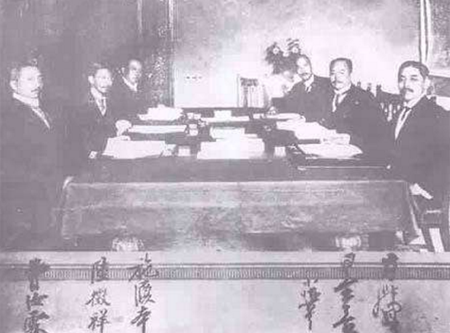
Beiyang Government signed the Twenty-One Demands with Japan
New ideas and new communities
Defeat at the hands of foreign powers and attempts to carve up China into spheres of influence only further inflamed the sense of nationalism among the people. In 1915, those feelings coalesced into the New Culture Movement. The movement formally began with the publication of the New Youth journal, which was created by Peking University professor Chen Duxiu. Leaders of the New Culture Movement believed that traditional Confucian values were responsible for the political weakness of the nation. In the face of Japanese encroachment on China young intellectuals, inspired by New Youth journal, began agitating for the reform and strengthening of Chinese society.
With Peking University as the epicenter, the movement developed and led to questioning and reappraisal of millennia-old Chinese values. Young intellectuals attacked traditional Confucian ideas and exalted Western ones - particularly science and democracy. Their inquiry into liberalism, pragmatism, nationalism, anarchism, and socialism injected new energy into traditional Chinese ethics, philosophy, religion, and social and political institutions.
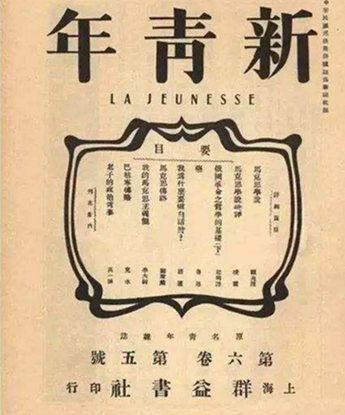
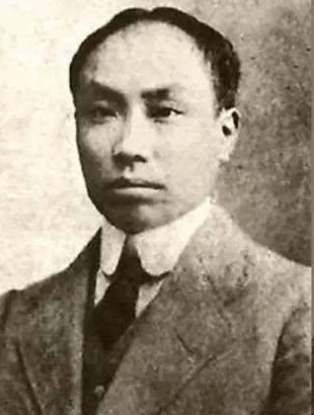
The Journal of New Youth and its founder Chen Duxiu
Direct cause of the Movement: the “Shandong Problem”
These patriotic feelings and the zeal for reform came to a head on May 4th, 1919 – hence the movement’s name. Although part of a broader movement, the immediate catalyst was the Shandong Problem.
In 1917 China entered the first world war on the side of the Allied Triple Entente with the understanding that all German spheres of influence, such as Shandong, would be returned to China after the war. Despite China’s contributions during the war, when the victorious allies met at Versailles in 1919, China’s interests and concerns were sidelined by western powers. Most egregiously the Treaty of Versailles, which formally ended hostilities, awarded German claims to Shandong Province to Japan.
Having heard the news of the terms of the treaty, Peking University students were enraged. On the eve of May 3, 1919, student representatives from around Beijing gathered at Peking University. Knowing about China’s diplomatic failure at Paris, they rebuked Japan for its unreasonable actions and felt it urgent to take actions. They decided to hold a march the next day at Tiananmen Square, calling on the Chinese government to uphold national sovereignty.

Paris Peace Conference
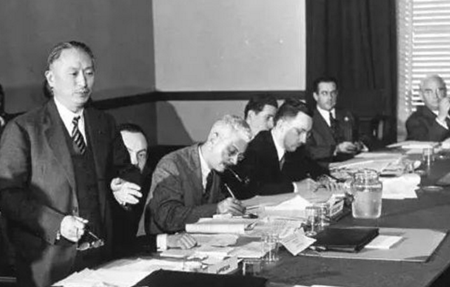
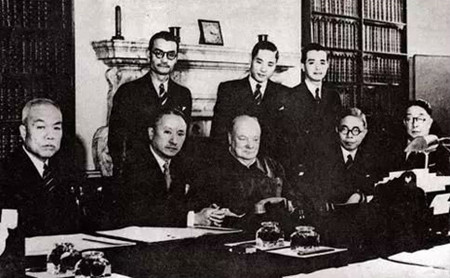
Wellington Koo at the Paris Peace Conference
The Movement begins
On May 4, 1919, more than 3,000 students from PKU and 12 other colleges gathered at Tiananmen Square. Holding banners and flags, students presented inspiring speeches condemning the Beiyang government for their cowardice. Enraged by the government’s compromise at the Paris Peace Conference, they shouted “Defend our sovereignty from external force, get rid of traitors inside our country!” along with “Give Qingdao back to us!”
Then the procession marched from Tiananmen Square. Based on the command from Beiyang government, security guards outside Beijing’s Legation Quarter forbid the students to pass leading to a standoff. When negotiations that stretched on for two-hours ended in vain, the students’ anger peaked. They matched towards Zhaojialou and burned the residence of Cao Rulin, then vice minister of Foreign Affairs. That fire prompted the Beiyang government to deploy police to suppress the demonstration and led to the arrest of 32 students.
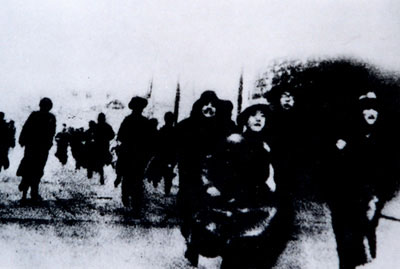
Students rushing to Zhaojialou
Nationwide influences
The news of the demonstration quickly spread throughout the country. The next day, students in Beijing went on strike and student from across the country quickly joined the movement. In Beijing, students organized street speeches on the Qingdao issue, the current situation in China, national self-determination, and called for a national waking up. They also launched a boycott of Japanese goods and burned Japanese imports in addition to refusing to sign contracts. Their actions put pressure on the business community and the government as they demanded the release of arrested students and punishment for traitors.
By early June, in big cities such as Shanghai and Guangzhou, workers and merchants begun to take over the struggle. On June 5, a mass strike involving students, merchants and workers broke out in Shanghai, which was a huge hit against the Beiyang government. Meanwhile, the Anti-Japanese Boycott spread across the country. On May 20, Beijing General Chamber of Commerce announced that they would stop importing and selling Japanese goods, stop using Japanese banknotes, stop reading Japanese newspapers and stop advertising in them.
The movement gained public support at home and abroad. Domestic media as well as foreign newspapers and magazines operating in China also showed their support. The North China Daily News condemned the policies for hurting Chinese people and appealed to foreigners to take responsibility and help China free itself from outside forces.
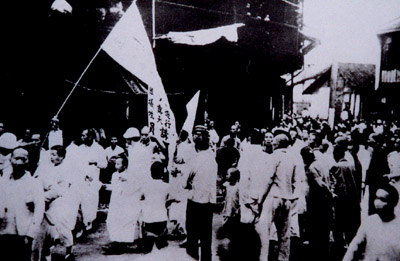
Anti-Japanese Boycott in Shanghai
Facing rising tension, the Beiyang government finally made concessions. Arrested students were released on May 7 and pro-Japanese officials Cao Rulin, Lu Zongyu (then president of Monetary Bureau) and Zhang Zongxiang (then foreign minister to Japan) were dismissed under the pressure. And on June 28, 1919, Chinese negotiators refused to sign on the Paris Peace Treaty, marking initial victory for the May Fourth Movement.
Starting from a student demonstration and culminating in a nationwide protest, the May Fourth Movement has long-lasting effects. As the beginning of China’s new democratic revolution, the movement awaked people’s sense of democracy and spread Marxism in China. Its great impact on all aspects of society such as ideology, politics, education and culture, make the May Fourth Movement a remarkable event in history.
References:
[1] 百度百科:“五四运动”, “二十一条”。
[2] Encyclopedia Britannica, “May Fourth Movement”, https://www.britannica.com/event/May-Fourth-Movement. Last accessed on April 2, 2019.
[3] New World Encyclopedia, “May Fourth Movement”, http://www.newworldencyclopedia.org/entry/May_Fourth_Movement. Last accessed on April 2, 2019.
[4] Wikipedia, “May Fourth Movement”, https://en.wikipedia.org/wiki/May_Fourth_Movement. Last accessed on April 2, 2019.
[5] Firstworldwar, “Primary Documents – ‘21 Demands’ Made by Japan to China, 18 January 1915”. https://www.firstworldwar.com/source/21demands.htm. Last accessed on April 23, 2019.
[6] General-History, “The 21 Demands (of Japan)”, http://general-history.com/the-21-demands-of-japan/. Last accessed on April 23, 2019.
[7] 中国文化研究院:“五四运动特辑”,https://www.chiculture.net/index.php?file=topic_content&old_id=0123#https://www.chiculture.net/0123/html/index.html,获取于2019年4月8日。
[8] The Academy of Chinese Studies, “May Fourth Movement”, https://en.chiculture.net/index.php?file=topic_details&old_id=0123. Last accessed on April 23, 2019.
Written by: Guo Xinyu, Wang Yupin
Edited by: Erin Dunne, Yan Shengnan, Zhang Jiang







